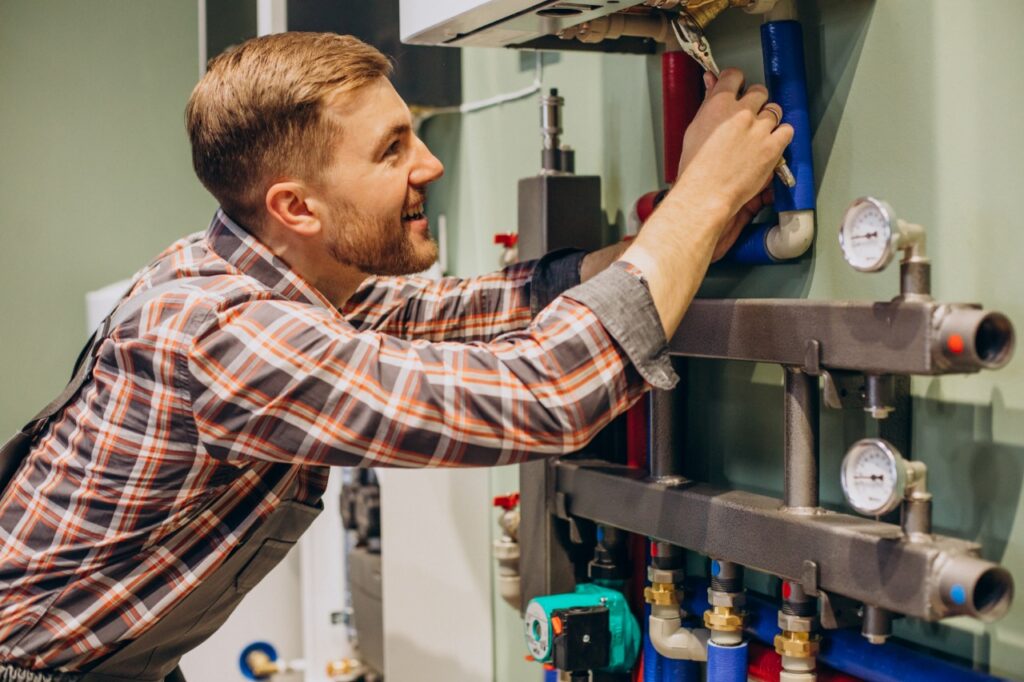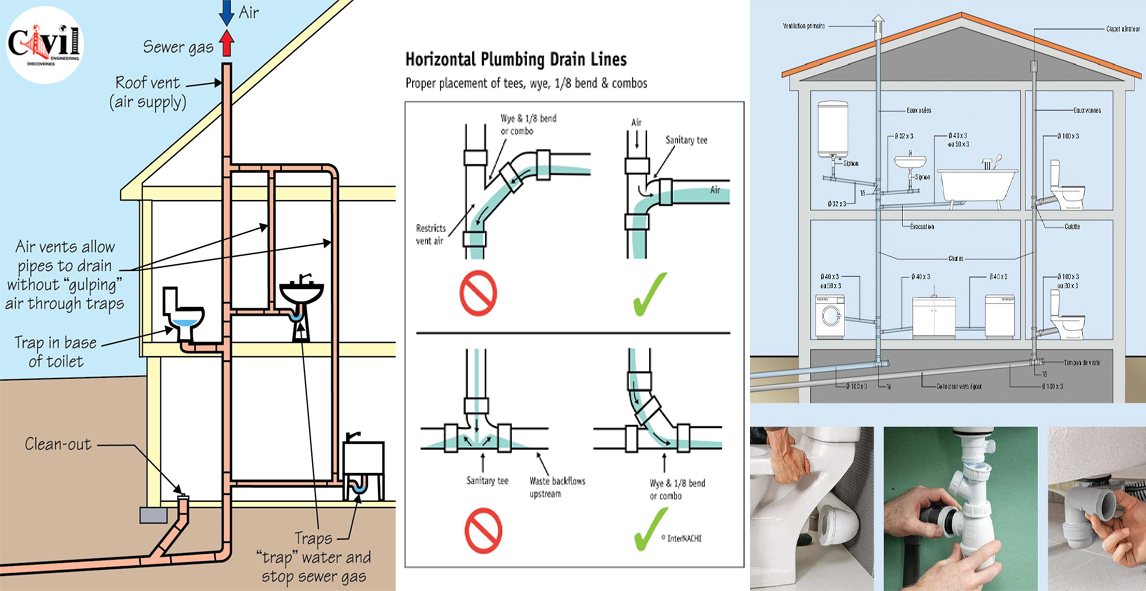Exploring The Layout of Your Home's Plumbing System
Exploring The Layout of Your Home's Plumbing System
Blog Article
This great article listed below in relation to Exploring Your Homes Plumbing Anatomy is unquestionably remarkable. Don't bypass it.

Understanding how your home's pipes system functions is essential for every home owner. From delivering clean water for drinking, food preparation, and bathing to safely getting rid of wastewater, a well-maintained plumbing system is vital for your family's health and wellness and convenience. In this extensive overview, we'll discover the intricate network that comprises your home's pipes and deal tips on maintenance, upgrades, and taking care of common issues.
Introduction
Your home's pipes system is more than just a network of pipes; it's a complicated system that guarantees you have accessibility to tidy water and reliable wastewater elimination. Knowing its elements and just how they collaborate can aid you stop expensive fixings and guarantee every little thing runs smoothly.
Fundamental Elements of a Plumbing System
Pipelines and Tubes
At the heart of your plumbing system are the pipes and tubes that lug water throughout your home. These can be constructed from different materials such as copper, PVC, or PEX, each with its benefits in regards to toughness and cost-effectiveness.
Fixtures: Sinks, Toilets, Showers, and so on.
Components like sinks, commodes, showers, and bath tubs are where water is made use of in your house. Recognizing just how these components connect to the plumbing system aids in diagnosing problems and planning upgrades.
Shutoffs and Shut-off Factors
Shutoffs regulate the circulation of water in your pipes system. Shut-off valves are important throughout emergency situations or when you need to make repair work, allowing you to isolate parts of the system without disrupting water circulation to the entire residence.
Water System System
Main Water Line
The primary water line connects your home to the municipal water supply or a private well. It's where water enters your home and is dispersed to different components.
Water Meter and Stress Regulatory Authority
The water meter steps your water usage, while a stress regulatory authority makes certain that water moves at a safe stress throughout your home's plumbing system, protecting against damage to pipelines and components.
Cold Water vs. Hot Water Lines
Understanding the difference in between cold water lines, which provide water directly from the major, and warm water lines, which carry heated water from the water heater, aids in troubleshooting and planning for upgrades.
Water drainage System
Drain Pipes Piping and Traps
Drain pipes carry wastewater far from sinks, showers, and bathrooms to the drain or sewage-disposal tank. Catches protect against drain gases from entering your home and likewise trap particles that can trigger clogs.
Ventilation Pipelines
Ventilation pipes allow air into the drainage system, avoiding suction that could slow water drainage and create catches to empty. Proper ventilation is crucial for preserving the stability of your pipes system.
Value of Appropriate Drain
Ensuring proper drainage stops backups and water damage. Routinely cleansing drains and maintaining catches can stop expensive repairs and prolong the life of your pipes system.
Water Heating Unit
Types of Hot Water Heater
Water heaters can be tankless or typical tank-style. Tankless heating units warmth water on demand, while containers store warmed water for prompt use.
Updating Your Pipes System
Reasons for Updating
Updating to water-efficient fixtures or changing old pipes can enhance water top quality, decrease water costs, and increase the value of your home.
Modern Pipes Technologies and Their Advantages
Explore innovations like clever leakage detectors, water-saving toilets, and energy-efficient water heaters that can save cash and lower environmental effect.
Expense Factors To Consider and ROI
Calculate the upfront prices versus lasting savings when thinking about pipes upgrades. Several upgrades spend for themselves through reduced energy expenses and less repairs.
Exactly How Water Heaters Link to the Pipes System
Recognizing how water heaters connect to both the cold water supply and hot water distribution lines assists in detecting concerns like inadequate hot water or leaks.
Maintenance Tips for Water Heaters
Consistently purging your hot water heater to get rid of sediment, checking the temperature settings, and checking for leaks can prolong its life expectancy and enhance energy effectiveness.
Typical Plumbing Issues
Leaks and Their Causes
Leakages can take place because of maturing pipes, loose installations, or high water stress. Resolving leakages immediately stops water damages and mold growth.
Clogs and Clogs
Obstructions in drains pipes and bathrooms are typically triggered by flushing non-flushable items or a build-up of oil and hair. Utilizing drain displays and bearing in mind what decreases your drains can prevent obstructions.
Indicators of Plumbing Problems to Expect
Low tide pressure, slow-moving drains pipes, foul odors, or uncommonly high water bills are indicators of possible plumbing troubles that must be attended to quickly.
Pipes Upkeep Tips
Regular Examinations and Checks
Arrange annual pipes assessments to catch problems early. Search for signs of leaks, corrosion, or mineral build-up in faucets and showerheads.
DIY Maintenance Tasks
Straightforward tasks like cleaning tap aerators, checking for toilet leakages using color tablets, or shielding exposed pipelines in chilly environments can stop major pipes issues.
When to Call an Expert Plumbing
Know when a plumbing concern requires specialist competence. Attempting complicated repair work without correct understanding can bring about more damages and higher repair service prices.
Tips for Decreasing Water Use
Easy routines like fixing leakages without delay, taking shorter showers, and running complete lots of laundry and recipes can conserve water and lower your energy costs.
Eco-Friendly Plumbing Options
Think about lasting plumbing materials like bamboo for floor covering, which is durable and eco-friendly, or recycled glass for counter tops.
Emergency situation Preparedness
Steps to Take During a Pipes Emergency situation
Know where your shut-off valves are located and exactly how to switch off the water supply in case of a burst pipe or major leak.
Value of Having Emergency Situation Contacts Useful
Keep get in touch with info for neighborhood plumbers or emergency services readily available for quick action throughout a pipes dilemma.
Ecological Influence and Preservation
Water-Saving Components and Appliances
Installing low-flow faucets, showerheads, and toilets can dramatically reduce water usage without sacrificing performance.
DIY Emergency Fixes (When Applicable).
Temporary fixes like using duct tape to patch a leaking pipeline or positioning a pail under a trickling tap can lessen damages up until an expert plumbing shows up.
Conclusion.
Understanding the anatomy of your home's plumbing system encourages you to keep it properly, conserving money and time on repair services. By following regular maintenance regimens and remaining notified regarding modern plumbing modern technologies, you can guarantee your plumbing system operates efficiently for several years ahead.
HOW YOUR PLUMBING SYSTEM WORKS
Which Pipes Do What?
Blue lines = fresh water supply entering the building Red lines = hot water supply entering the building Grey lines = pipes carrying waste away from the building and venting pipes carrying gases away from the building (through the roof) YOUR MAIN PLUMBING SYSTEMS
There are two main plumbing systems that support your home s basic plumbing needs one that brings clean water into your home, and one that sends dirty water away from your home. Connected to the toilet, bath, shower, and other faucets in your home, these two systems keep your water flowing in the right directions.
ACCESSING FRESH WATER
Fresh and clean water is brought into your home through the main water supply line . Filtered through one pipe, this water is pressured to flow into the various fixtures in your home at any given time.
This water can be sourced from a well located on your property, a pond or river (mostly cottages), or, as in most cases, from the city s municipal water treatment centre. However, it is important to note that water that is untreated, such as the water siphoned from ponds or rivers, may not be safe to drink. Personal water supplies always need to be treated for hardness and contaminants before consumed.
MUNICIPAL WATER SUPPLIES
Improve taste and odour Remove sediment Eliminate hardness Reduce chlorine COLD WATER SUPPLY VS. HOT WATER SUPPLY
Cold water flows into your home or building through the service line, which then distributes hot or cold water to your fixtures. This line is most commonly run through a central column that runs floor to floor. Hot water runs in short and straight pipes as the longer the pipeline, the more heat that will be lost in the transfer. Having shorter pipes also allows residents to access hot water more quickly.
WASTE WATER SYSTEM
Your wastewater system is divided into two parts pipes that send wastewater away from your home and venting pipes that send sewer gas away from your home. Sewage water travels through pipes that flush the water and waste towards local sewers that are operated and managed by your city or town. Most sewer systems rely on gravity to move the wastewater to where it needs to go.
The further away from your toilet or sink, the larger wastewater pipes become. This allows for waste to be disposed of from various parts of your home or business at once without pipe blockages. The angle and flow of these pipes are also essential for keeping your waste pipes clear of build up.
https://harrisplumbing.ca/how-your-home-plumbing-system-works/

As a serious reader about The Inner Workings of Your Home's Plumbing, I figured sharing that piece was smart. Please pause to distribute this content if you liked it. Thank you for going through it.
Estimating Report this page